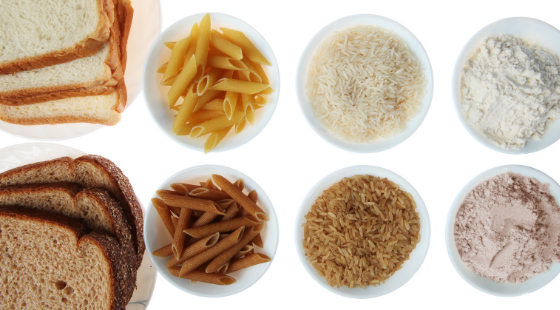
It’s a really scary fact is that this is going to be the first generation where we will outlive our kids. Our Western dietary habits are setting our children up for childhood obesity, diabetes and a whole host of diseases and health condition in their future. Children have never been afflicted with more chronic illnesses and conditions than in present day.
Many parents are unknowingly contributing to this trend . It is frightening to think that the food our children are eating are potentially laying the foundation for mental health problems, cancer, heart attacks, strokes… and the list goes on.
Unfortunately, there are a number of reasons for this…
- Highly processed foods tend to be cheaper and more available and these processed foods are void or limited in nutrients but loaded with saturated fats, artificial preservatives, colorings and flavourings that are detrimental to our nervous systems, organs and brain function.
- Portion sizes have steadily increased over the years. Do you remember as a kid getting the small cookie and now you just need look at the size of the cookies that are available at Starbucks that little kids are being fed that well exceeds their daily quota of sugar.
- Both parents are now working in most families, and kids have multiple programs and sports after school resulting in not having time to prepare meals and relying on grabbing some fast food on the road.
- Normalizing of consuming processed foods as a standard and staple meal or food that our children should consume, as opposed to it being a treat or viewed as unhealthy.
- Marketing of children’s food products confuse parents into thinking it is a healthy food option, when most packaged and prepared foods are not.
- Lack of education, understanding and knowledge of how impactful the foods that our children consume are in relation to their behaviours, cognition, mental state, physical health and long-term wellness.
It doesn’t have to be overwhelming to make simple changes to your child’s diet and you don’t have to do it all at once. Making small changes over time and making your children a part of the process are two great way to start building healthier family eating habits. You might be surprised of the snowball effect of good, clean, healthy eating with better moods, energy levels, less outbursts, better sleep, weight loss, skin conditions resolving and even better and healthier relationships with one another.
The number one goal to remember is to eat CLEAN!
Here are some Clean Eating Principles to incorporate:
- Eat food that looks like it has been from its original state ie eating a strawberry as oppose to a strawberry roll up (which looks nothing like it’s original form)
- Eat 3 meals and 2 snacks a day
- Consume fruit and vegetables on a daily basis for fiber, complex carbohydrates and enzymes. Kids minimum requirement is 5 servings a day
- Consume whole grains instead of refined white grained products that are processed and chemically charged
- For dinner stick to half the plate being vegetables (salad, cooked vegetables, cut up raw vegetables) and ¼ protein (chicken, fish) and ¼ carbohydrates (pasta, rice, sweet potatoes)
- Consume healthy fats each day such as avocado’s, fish, nuts, seeds, and coconut oil
- Choose lean proteins such as poultry, fish, wild game, non-GMO soy, legumes or hormone free, grass fed beef.
- Stick to healthy portion sizes
- Drink lots of water ideally 2-3 liters a day and avoid pop, store bought juices, energy drinks and other processed sugar laden drinks
- Avoid sugar and artificial sweeteners, sweetened meals with stevia, swerve, xylitol, honey or with fruits such as apple sauce.
Don’t know where to start?
Here are some healthy switch outs that you can make to your children’s lunches, whether they are craving salty chips or sugary cookies there are healthy alternatives to reduce their sugar-intake and calories and increase their vitamins, minerals, good fats and healthy proteins.
| Food Item | Problem with this | Healthy Alternatives | Health Benefits of this |
| Packet of chips | No nutritional value, high in sodium and calories, Acrylamide is a chemical in potato chips that forms when you cook potatoes at high temperatures and may increase the risk of cancer and nerve damage. | · Roasted chickpeas · Seaweed · Kale chips · Trail mix of nuts (cashews, almond, walnuts, pecans) and/or seeds (pumpkin, chia, hemp, flax, sesame, sunflower) · Potato salad | Higher in vitamins and minerals, good fats, fiber. |
| Chocolate bar | High in calories and sugar, no nutrient value | · Home-made chocolate bark (link to recipe) · Stevia sweetened chocolate chips · 70%+ dark chocolate | High in minerals such as magnesium, low in sugar, good fats for brain health and energy, and can hep to satisfy sugar cravings. |
| Cookies | Loaded with excess sugar, refined carbohydrates (white flour) that will spike blood sugars, calories, trans fats (to preserve shelf life) | · Healthy muffins · Home-made cookies sweetened with swerve or apple sauce · Raw energy balls/bars | High in fiber, good fats, vitamins and minerals, help to feel satiated, reduce sugar cravings and binge eating . |
| Processed meats (deli meats, salami, lunchables, luncheon meats, hot dogs) | Contain nitrates that have a negative effect on the nervous system | · Boiled eggs · Leftover dinner · Roast chicken · Hormone free sausages · Chickpeas or black beans · Quinoa · Lentils | Reduced saturated fats, no nitrates and other chemical based preservatives, high in vitamins and minerals, (legumes and lentils also high in fiber) |
| Ketchup | Loaded with hidden sugar | · Salsa | No sugar, helps increase metabolism |
| Packaged and flavoured popcorn | Can contain preservatives, sugars, artificial flavourings | · Plain, home-made cooked popcorn that you make in a pot or air popper | Free from artificial flavourings and colorings, can add healthy fat like coconut oil |
| Fruit loops, Frosted flakes and other sugary based cereals | Loaded with sugars that will offset blood sugars affecting mood, energy levels, focus, and cause weight gain | · Plain oatmeal with applesauce, or sliced banana, apples and cinnamon instead of sugar · Kashi cereals · Shredded wheat · Ezekiel cereals · Ancient grains | High in fiber, complex carbohydrates, balance blood sugar levels to help with sustained energy and mood. Nutrient dense and high in B vitamins for energy and brain function. |
| Commercial sugary peanut butters (like Kraft) | Contains sugars and hydrogenated oils | · Unprocessed natural nut or seed butters · Hummus · Coconut oil | These spreads contain good fats, and complex carbohydrates, and no sugar or hydrogenated oils |
| Processed and sugar loaded yoghurts and yoghurt drinks | Contain sugars, artificial colorings, flavourings and preservatives | · Unsweetened apple sauce · Plain Greek yoghurt with raw nuts, seeds and/or fresh fruit added · Home-made smoothies · Chia pudding | Nutrient dense with a combination of complex carbs, proteins and fats, can hide vegetable and fruits in smoothies that may not otherwise be consumed |
| White bread, bagels and crackers | Raises blood sugars, limited fiber, excess calories, nutrients depleted, do not feel satiated. | · Whole grain or brown rice breads, wraps and pitas · Whole grain or brown rice crackers | Increased fiber and B vitamins, balances blood sugars for more sustained energy and mood throughout the day |
| Pop (regular or diet) | Both sugar and artificial sweeteners such as aspartame have been shown to increase insulin resistance, weight gain and increase appetite. These drinks provide no nutritional value, Phosphorus in pop can be detrimental to bone health and teeth. Contains caffeine that may cause hyperactivity in kids. | · Zevia drinks (stevia sweetened pop) or sparkling water · Plain water with cut up fruit and herbs for flavour | Don’t spike blood sugars or contribute to weight gain, help to increase hydration needed for better focus memory and energy |
We hope that by sharing these easy ingredient swap-outs, it makes choosing healthier choices for your child’s lunch a little bit simpler! Which swap are you going to try first?





